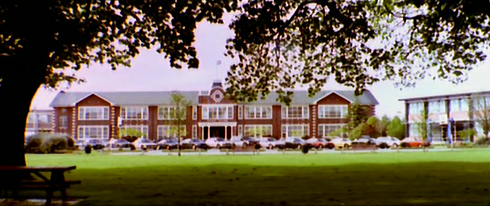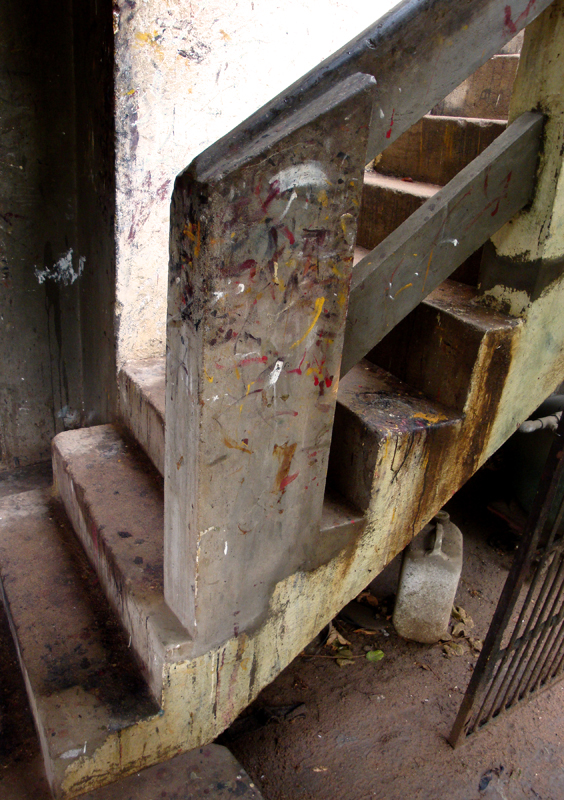Site-Specific Art
In his book Eyes of the Skin, Pallasmaa talks at great length about the beauty of human perception and how the senses interact with each other to form experience. He emphasizes the importance of a sense experience as a whole. He says there is a bias to the eye in the architectural practice because people are focussed on how a building looks rather than how a body can move within it or how it feels. When it comes to the perception of places he discusses the importance of emotion, memory, imagination and fantasy.
During my research into place-making in phase two I briefly discussed the rigidity of a panoramic city view and my attempts to break it by framing unfamiliar cityscapes, using shadows and through collaboration. The book is relevant to my studies because it discusses creating place, the transitive nature of site, framing and virtual and 'real' spaces. The author describes monuments as loci's of power and authority (Kaye, 2000) in his chapter on Performing the City. This underlines the rigidity of the panorama since monuments are an iconic part of them. A relevant example is Mumbai's famous Nariman Point which is named after a historical Congress party leader and contains Indian and international financial institutions and government buildings such as CBI, RBI, Mittals, Birla's, JP Morgan, Merrill Lynch, Vidhan Sabha etc.
Monumentality […] always embodies and imposes a clearly intelligible message. It says what it wishes to say - yet it hides a good deal more: being political, military and ultimately fascist in character" (Lefebvre, 1991 cited in Kaye, 2000, p. 34).
He also discusses the relation between the body and the city or built environment and the body and the space, which in this case is the installation space in artist Wodiczko's work. A completely artificial and constructed installation is also a built environment. People interact with the architecture of the city, and similarly the audience interacts with the architecture of installation. The artist says that 'Our position in society is structured through bodily experience with architecture' (Wodiczko, 1992 cited in Kaye, 2000, p. 38).
In the installation test below, the audience directly affects an abstracted view of the city. In this constructed space people can directly change and affect an image of the architecture, making it fluid and interchangeable.
The author says 'where the site functions as a text perpetually in the process of being written and being read, then the site-specific work's very attempt to establish its place will be subject to the process of slippage, deferral and indeterminacy in which its signs are constituted' (Kaye, 2000, p. 183).
Further reading lead me to Merleau-Ponty's theories of phenomenology and perception where he discusses the essence of perception and experience. He says that we cannot separate our minds and bodies from our perception of the world, or in other words that we are 'condemned to meaning' (Merleau-Ponty, 1962, p. xxii). In his book the Phenomenology of Perception he discusses the relationship between reflective and unreflective experience, psychological and physiological aspects of perception, and consciousness as a process that includes feeling and reasoning.
We must not, therefore, wonder whether we really perceive a world, we must instead say: the world is what we perceive. (Merleau-Ponty, 1962, xviii).
In his book Eyes of the Skin, Pallasmaa talks at great length about the beauty of human perception and how the senses interact with each other to form experience. He emphasizes the importance of a sense experience as a whole. He says there is a bias to the eye in the architectural practice because people are focussed on how a building looks rather than how a body can move within it or how it feels. When it comes to the perception of places he discusses the importance of emotion, memory, imagination and fantasy:
We have an innate capacity for remembering and imagining places. Perception, memory and imagination are in constant interaction; the domain of presence fuses into images of memory and fantasy. We keep constructing an immense city of evocation and remembrance, and all the cities we have visited are precincts in this metropolis of the mind. (Pallasmaa, 2005, p.67).
In my attempts to create a feeling of conflict within the city, a subtle realization of the bipolarity within Mumbai, the result was a space that could not be expressed as a still image. Not could it be expressed by only video. By adding a third dimension of time and motion, where the audience themselves make the image change and break the city is read as something in constant flux.
I know myself only in my inherence in time and in the world, that is, I know myself only in ambiguity. (Merleau-Ponty, 1962, p.402).
Reference: Kaye, N. 2000. Site-Specific Art: Performance, Place and Documentation. Routledge: London Merleau-Ponty. 1962. Phenomenology of Perception. Routledge: London. Pallasmaa, J. (2005). Eyes of the Skin: Architecture and the Senses. John Wiley & Sons: UK. View Wodiczko's Bio & Work in detail.
Genius Loci
In phase one I succeeded in defining my area of study, learning about projecting video, building installations, and the limitations involved. Phase two is about capturing a "feeling" of Mumbai. But what is this feeling, this intangible "sense of place," and how can I create a space that communicates it effectively. The city is a multi-layered, complex and rich experience. No one has identical perceptions of something that is so much in flux, so huge in scale. At the same time there is an underlying recognition of its flavour, a distinctive personality that can be called its Genius Loci. In trying to pinpoint this atmosphere of Mumbai, something which is intrinsic in my memories of the city, and which all Mumbaikars are familiar with, I questioned my original plan of building a 360 panorama in a closed studio space.
An outdoor location is one of the ways I plan to solve this riddle. Although it is technically difficult to build an installation outside a controlled studio set-up, I am of the opinion that the right place can physically represent the city, and communicate a lot more than well-edited video or sound ever could.
Place-making is discussed in detail here.
Reference
Menin, S. (2003). Constructing Place Mind and Matter. London: Routledge.
Bombay Cinema: An Archive of the City
Initially the concept of the "elsewhere" that inspired my focus on the conflict between the real and the ideal in Mumbai came from an article by Ashraf K. Kazi about the "Masala City." He went on to give examples from Bollywood movies such as Mein Prem Ki Diwani Hoon, where the entire movie unfolds in an imaginary Indian town called Sundarnagar. This lead me to look into Bollywood and the ways it represents Mumbai. The movie-making industry in Mumbai has come of age - now more than a 100 years old, and it reflects the city's conflicts, politics and desires as much as its people. Excerpts from the book Bombay Cinema by Ranjani Mazumdar:
"The Bombay-based film industry resonates throughout the world, in places where the Indian diaspora has settled and in places where nonnative speakers appreciate its unique choreography of music, melodrama, fantasy, and spectacle. Much of popular cinema’s success can be attributed to what many in the industry refer to as a “techno folk” form, which combines folk traditions with new cinematic technology."
"Drawing on various visual, literary, and artistic traditions, each with its own distinct history, popular Indian cinema is an evolving, unabashedly hybrid cultural form that narrates the complicated intersection between tradition and modernity in contemporary India. Film production started in India almost simultaneously with other filmmaking countries, beginning in 1896."
The author also mentions the Indian street, as a place which contains Indian life and all its related conflicts. Although I am currently focussing on building a virtual Mumbai skyline, creating a street could also interest me in the future.
"In a rare piece, Arjun Appadurai describes the Indian street as the space where “India eats, works, sleeps, moves, celebrates and worships. The street is a stage that rarely sleeps” (1987, 14). Through a vivid visual anthropology (across different cities of India), Appadurai traces both the historical formation and the function of the street, as well as its present location in the cultural and social life of India. The multiple activities and events of the street are a clear reminder that the “sharp demarcation of public from private spheres is a recent addition to the Indian consciousness” (1987, 14). For Dipesh Chakrabarty, the modernist categories of the public-private divide were challenged by the street in India where “People washed, changed, slept...out in the open” (16). But neither Appadurai nor Chakrabarty refers specifically to the presence of women in the street. The Indian street as described by these writers is ubiquitous and peopled by all types engaged in different forms of activity in an almost genderless space."
Reference:
Ashraf, K Kazi. (2005) Masala City: Urban Stories from South Asia. The New Mix: Culturally dynamic architecture, Sara Caples and Everardo Jefferson, Architectural Design. Vol 75, No 5 Sept/Oct 2005, pp.67-68.
Mazumdar, Ranjani. Bombay Cinema : An Archive of the City. Minneapolis, MN, USA: University of Minnesota Press, 2007. p 18, 19, 120. http://site.ebrary.com/lib/aib/Doc?id=10206194&ppg=18 Copyright © 2007. University of Minnesota Press. All rights reserved.














